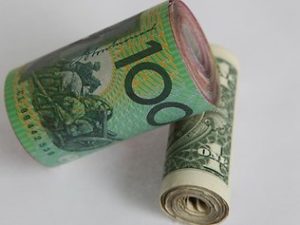 Having slipped to almost three-month lows earlier, the Australian dollar regained some ground to trade little changed against its US counterpart on Wednesday, following a report, which showed residential construction continued lagging during the third quarter of the year, while overall construction work done surpassed preliminary estimates.
Having slipped to almost three-month lows earlier, the Australian dollar regained some ground to trade little changed against its US counterpart on Wednesday, following a report, which showed residential construction continued lagging during the third quarter of the year, while overall construction work done surpassed preliminary estimates.
AUD/USD touched a daily low at 0.9100 at 2:05 GMT, after which consolidation followed at 0.9123, dipping 0.03% for the day. Support was likely to be received at November 26th low and also the lowest point since September 4th, 0.9089, while resistance was to be met at November 25th high, 0.9196.
Earlier on Wednesday a report showed that construction work done in Australia increased 2.7% in Q3 compared to Q2, or the strongest pace since the first quarter of 2012, while projections pointed a 0.6% gain. Engineering work done rose 3.5% during the same period, snapping a series of three consecutive quarterly drops, while building work done increased 1.5% in Q3, or a second quarter in a row. Residential construction, however, dropped 0.3% during the third quarter.
Meanwhile, Reserve Bank of Australia (RBA) eased recent speculation that it might consider an intervention in the markets in order to reduce the value of the national currency and facilitate Australian exporters’ competitiveness. “We don’t rule intervention in or out, that’s been a long-standing practice,” RBA Deputy Governor Philip Lowe said in response to an audience question following a speech in Sydney on Tuesday. “In the past, we have been prepared to intervene in the currency market when it’s clear the currency was misaligned or the market wasn’t working well. The threshold for intervention though is fairly high.”
His comments came after on November 21st RBA Governor Glenn Stevens said, that “the Australian dollar is currently above levels we would expect to see in the medium term,” while also adding he was “open-minded” on currency intervention.
“It’s clear the RBA doesn’t want Aussie much higher,” said Stan Shamu, a Melbourne-based market strategist at IG Ltd., cited by Bloomberg News. “The strategy that seems to be most prominent amongst traders is selling Aussie into strength. If we close below yesterday’s low, we’ll be looking at 90 U.S. cents in the short term.”
Traders saw a 32% probability that the central bank will consider a reduction in its benchmark interest rate as of March from the current record low level of 2.50%, according to overnight-index swaps data.
The yield on Australian 10-year government bonds decreased for a fourth day in a row, marking the longest sequence of losses in three months. Yields fell three basis points, or 0.03 percentage point, to reach 4.20% today, after having climbed to a two-year high of 4.35% last week.
In the United States, yesterday it became clear that consumer confidence unexpectedly decreased in November. The index, gauging confidence among consumers, dropped to a reading of 70.4 in November from the revised up value of 72.4 a month ago. Experts had anticipated that the index will reach 72.1 in November. According to a report by the Conference Board research group, US consumers expressed concerns over employment in the future and also over their income prospects. The sub-index of economic expectations decreased to a reading of 69.3 in November from 72.2 in October, while the gauge of current assessment retreated to 72.0 in the current month from 72.6 in the preceding month. These results painted a picture of uncertainty, as the holiday season may pose challenges to retailers in the country.
Elsewhere, the Aussie was losing ground against the euro, with EUR/AUD cross advancing 0.27% on a daily basis to trade at 1.4915 at 8:19 GMT. AUD/NZD pair was up 0.16% to trade at 1.1124 at 8:20 GMT.





